The UK’s love affair with electric vehicles shows no sign of slowing. More than 382,000 EVs rolled off forecourts in the past year alone, putting Britain among the fastest growing EV markets in the world (Financial Times).
The charging network is expanding at pace too, and by September 2025 there were over 85,000 public charging points nationwide, a 25 per cent increase in only twelve months (Energy Live News). For drivers, charging is no longer an optional convenience. Whether you are at home, at work, or on the road, a reliable charger has become a necessity.
For businesses and larger projects, the scale looks very different, installation costs can range from £2,000 to six figure sums, depending on the complexity and requirements of the project.
The Different Types of EV Chargers
Not all chargers are created equal. At the most basic level there is Level 1, often called slow charging, which plugs into a standard three pin socket and adds only two to five miles of range per hour (Car Charger Install; Danlec). It is acceptable for the odd emergency but hardly practical for anyone who drives daily.
A step up from that is Level 2, the fast home charging option, which uses a 240 V supply to deliver between ten and sixty miles of range per hour. This is the set up most homeowners choose (Danlec; The Electric Car Scheme).
Finally there are DC fast chargers, often known as rapid or ultra rapid, which are typically found at service stations and public charging hubs. These deliver much higher power outputs and are designed for quick top ups when you are out and about (RAC).
Working Out What You Need
Before you book an installation it is worth thinking about your own requirements. The type of car you drive and the mileage you cover each day will determine how powerful a charger you really need. Your home’s electrics also come into play, as older properties may require upgrades before they can support a Level 2 unit. Parking arrangements matter too, since a driveway or garage will make life easier, and the distance from your power supply is an important factor. Finally, consider the future. If you plan to buy a second EV or share with family members, it makes sense to install a charger that can handle additional capacity from the outset.
The Technical Side
Installing a fast home charger is not as simple as plugging in and walking away. A typical set up involves fitting a dedicated circuit for the charger, checking fuse ratings, and sometimes deciding if an electrical upgrade is required.
Certified installers manage all of this, from assessing the wiring and inspecting the fuseboard to advising on extras such as smart meters or split supplies. Just as importantly, they make sure the work complies with building regulations and Part P electrical safety standards (EV Charger Post; UK Power Networks).
What the Installation Looks Like
On installation day the process usually follows four clear stages. It begins with a site survey where the installer looks at your parking area, possible cable routes, and the existing supply. Wiring and circuit protection are then put in place to ensure safety.
The charger is mounted in a practical and secure location, before being fully tested and commissioned, with any smart features set up for use. In most cases the work is quicker than expected. Companies such as Solarsmith say a straightforward job can be completed within a few hours, and ALKAG Electrical report similar timelines for standard installations.
How Much Does It Cost
Cost is often the deciding factor. A 7 kW home charger, fully installed, averages about £1,110 (Electric Car Guide; The Electric Car Scheme). Checkatrade places the typical cost closer to £1,000, but this can fall to £650 if you qualify for a grant.
Supply only chargers usually range from £450 to £800. The Electric Car Scheme estimates that with grant support, the figure drops to about £760. Ohme’s ePod starts at £949 installed, while the Home Pro is priced at £999. The Eco Experts calculate that charging at home costs around £610 a year, compared with £1,077 on public networks, which underlines the savings.
The Times suggests the outlay pays for itself in about three years, once energy savings and government incentives are taken into account. The bottom line is that although installation is not cheap, the return on investment makes it worthwhile.
Grants, Incentives and the Rules You Need to Know
There is still financial support available in the UK for charger installations. The OZEV Grant covers up to 75 per cent of the cost, capped at £350 (What Car?; The Full EV).
The scheme has been extended until April 2026, giving households and businesses more time to benefit (Comera Energy). Local authorities also run their own schemes, particularly targeted at renters and landlords (The Electric Car Scheme; GOV.UK). To qualify for these grants, the work must be carried out by an OZEV approved installer, who also ensures compliance with Part P safety rules (EV Charger Post). Checking eligibility before committing is always a wise move.
Smart Charging and What Comes Next
Charging is no longer just about plugging in. It is becoming smarter and more connected to the wider energy system.
Research by EY and Eurelectric shows that smart charging, including time of use tariffs and shifting demand, could save drivers thousands over the lifetime of their EV (EY; EV Fleet World). It also helps reduce strain on the national grid and improves flexibility (The Guardian).
Vehicle to Grid technology takes things even further, allowing EVs to feed power back into the grid. Reuters reports that this could even generate income for drivers, while The Times highlights cars capable of powering a home for several days.
The latest chargers, such as the Zaptec Go 2, now offer solar integration and over the air updates, demonstrating how rapidly the technology is advancing (Fleet News).
Choosing the Right Installer
Finding the cheapest installer might seem tempting, but safety and reliability are more important. The best option is to choose a company with OZEV approval and either NICEIC or Part P accreditation. Experience with the specific model you intend to buy also matters, and reputable installers will always provide a clear and transparent quote with no hidden extras.
Directories, accreditation bodies, and customer reviews are all valuable sources of reassurance when making your choice.
Common Questions Answered
A number of questions come up time and again. Can you install a charger yourself? The answer is no, only a certified electrician can legally and safely carry out the work. How long does it take? A standard installation usually takes only a few hours (Solarsmith; ALKAG Electrical).
Can you charge more than one car? Yes, but the system must be designed to accommodate it. And when will you see a return on your investment? Often within about three years, thanks to energy savings and the availability of grants (The Times).
These questions are frequently referenced on motoring sites and forums, making them a valuable source of evergreen information.
Conclusion, Making EV Charging Simple
Installing an EV charger may sound complicated, but with a qualified installer it is usually a straightforward process. Grants and incentives help to reduce the cost, smart technology is making charging more efficient, and the public network continues to expand.
For anyone driving an electric vehicle, fitting a home charger is no longer a luxury. It is a practical investment that offers convenience, savings, and peace of mind for the years ahead.
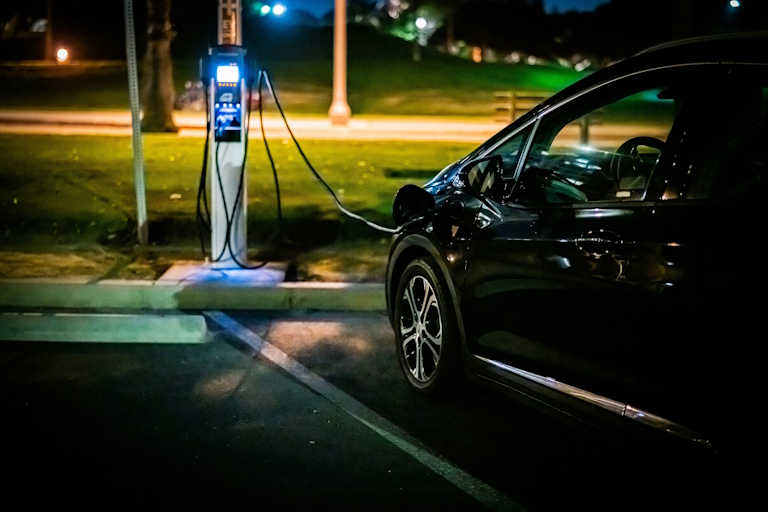

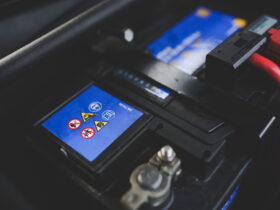




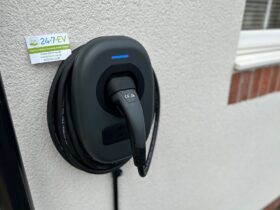


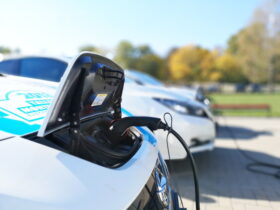

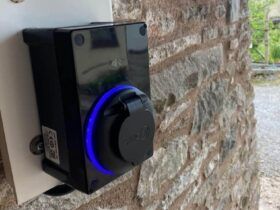

Leave a Reply